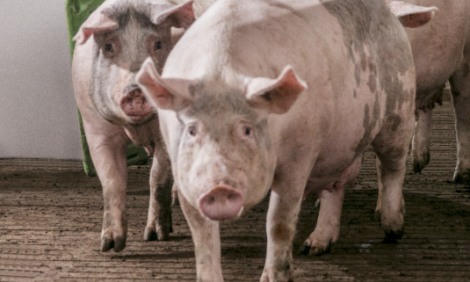



Nutrition Key to Improved Reproductive Performance, Longevity of Sows
CANADA - The Head Nutritionist with Gestal suggests a greater focus on nutrition in the sow herd can result in better conception rates, improved milk production during lactation, reduce re-breeding intervals and extended longevity, according to Bruce Cochrane.Capturing Potential Through Nutrition will be discussed as part of a Sow Housing Seminar to be hosted by the Prairie Swine Centre, Swine Innovation Porc and CDPQ next Tuesday in Winnipeg and Wednesday in Strathmore.
Dr Hyatt Frobose, the Head Nutritionist with Gestal, says nutrition is the precursor to setting up sows for success.
Dr Hyatt Frobose-Gestal
A sow that is over conditioned or under conditioned when she's bred is less likely to conceive.
A sow that is under conditioned or over conditioned at the time of farrowing is less likely to milk to her full potential, she is less likely to breed back within a timely fashion.
Ultimately those types of impacts cause her to exit the herd more quickly which is a growing concern within the industry right now.
For example over 90 per cent of US swine production currently see sow mortality levels around 10 to 12 per cent or higher annually.
That's not sows being culled from the herd intentionally.
Those are sows dying on the farm and it's typical to see anywhere from a 50 to 60 per cent annual replacement rate within herds.
While turning over generation intervals is important within a herd to maximize your genetic potential, it also highlights some concern in terms of keeping these sows in the herd to the time where they'd be able to pay themselves off effectively.
We have way too many girls that are leaving the herd after their first parity or second parity because nutritional problems can lead to reproductive problems which are usually the main precursor to exiting the herd.
Dr Frobose acknowledges nutrition is an important part of any production enterprise on the swine side because it makes up around 65 to 70 per cent of the final cost of production for a finished pig.








